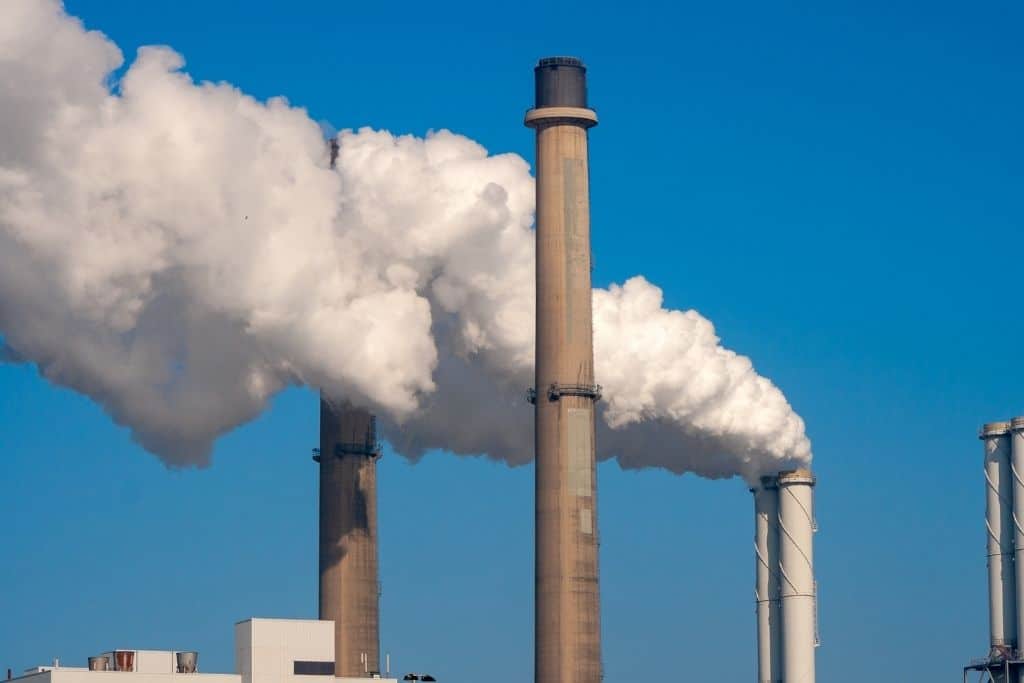Carbon capture and sequestration or storage is a term that refers to the process in which carbon emissions are taken and either disposed of safely, or recycled in an efficient manner. In the fight against climate change, CCS has become an important point of discussion among scientists and policymakers.
—
The process of carbon capture and storage (CCS) involves capturing carbon emissions from natural occurrences and manmade sources. These emissions are then transported elsewhere and stored away safely, preventing the release of additional carbon as well as reducing the amount of greenhouse gases present in the atmosphere. This is done in three different ways: biologically, geologically, and technologically.
Biological methods refer to the storage of carbon within oceans, vegetation, and soils. Oceans absorb about 25% of the globe’s carbon emissions, with colder regions like the north or south poles absorbing more emissions than compared to warmer regions. Forests and grasslands account for another 25% of emissions absorption, converting carbon dioxide into oxygen through the process of photosynthesis. Lastly, soils can absorb carbon and convert it into carbonates, an inorganic component with the ability to store carbon for over 70,000 years, but the process could take thousands of years to form.
Geological methods refer to the storage of carbon in underground formations. Emissions are typically captured from manmade sources, namely the outputs of industrial production and power generation. They are then transported away to designated storage sites as solid matter or dissolved particulates, after which they are injected into porous rock foundations where they are rendered harmless. This method ensures that carbon is never released into the atmosphere as harmful emissions.
Technological methods refer to the recycling of carbon through scientific methods and innovative engineering. Rather than a waste material, carbon is utilised as a resource. It can be used as a raw material in the production of graphene, an important component in the construction of smartphones as well as other electronic devices. Specialised facilities and refineries can also take in emissions through direct air capture, although this method is energy and capital intensive. Engineered molecules are specifically designed compounds that would be capable of singling out carbon from the atmosphere at the elemental level, acting as an air filter.
You might also like: Carbon Capture Technology is Finally Underway
On these fronts, the most recent report on climate change mitigation, published by the Intergovernmental Panel on Climate Change, has noted the continued signs of success and progress in the implementation of carbon capture and sequestration technologies. Despite the fact that these methods of decarbonisation are becoming cheaper and easier to produce, the level of global demand for conventional fossil fuel usage in energy production is expected to increase. The problem then is not in the failure of CCS implementation, rather, it is political in nature. The technology is still relatively new and it faces economic, institutional, environmental, and socio-cultural barriers that prevent it from becoming more widespread.
Regardless, the importance of CCS as an instrument in mitigating carbon emissions cannot be overstated. Coal, oil, and gas are expected to continue dominating energy production, dependency on which has been steadily rising since 2000 and even despite the advent of lower-cost renewable alternatives. To meet the goal of limiting global temperature increases to 1.5 °C as outlined in the Paris Agreement, the largest sources of emissions need to be curtailed. Without CCS, reliance on fossil fuels would need to be severed completely, yet this is not feasible nor is it realistic within a short time frame. As such, CCS is an effective stopgap measure in gradually weaning reliance away from fossil fuels, creating flexible energy systems that can adapt to cleaner renewable alternatives, and facilitating the process of phasing out non-renewable resources.
Altogether, CCS may not be the miracle solution that can stop climate change in its tracks, nor should it be thought of as such. Even so, it is a crucial instrument when it comes to innovating existing energy systems, and it has already proven to be effective in blunting the impact of emissions-intensive sources of power generation. Therefore, the role of carbon capture and sequestration technologies should continue to be discussed between scientists and policymakers, ideally implementing this measure on a wider scale to aid in the fight against climate change.
You might also like: World’s Largest Direct Air Capture Plant Starts Carbon Capture and Storage


















